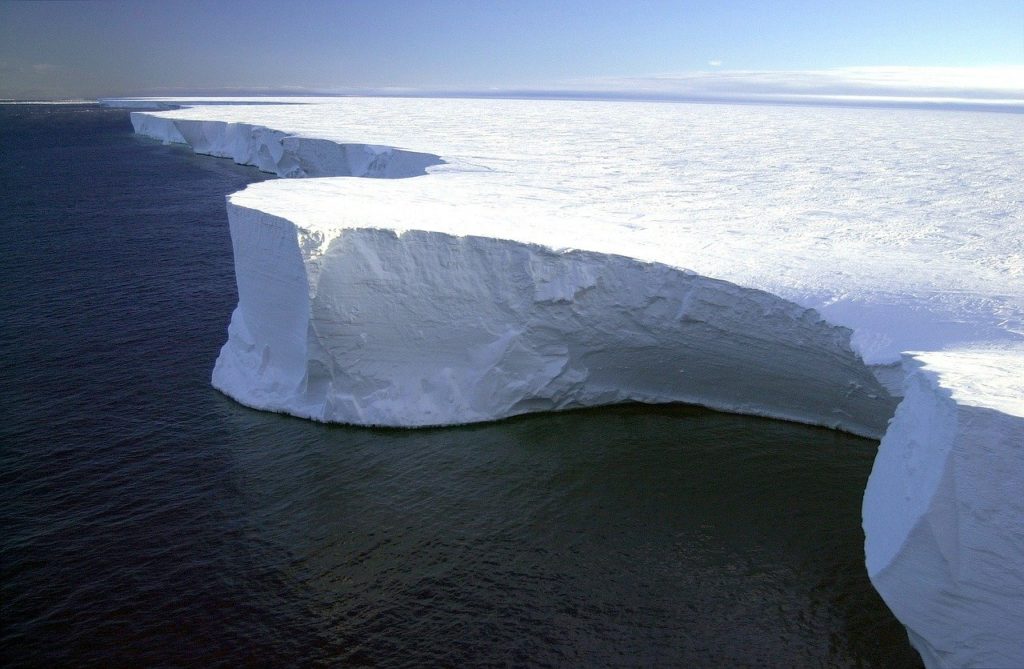A glacier is a mass of ice that flows slowly. Glaciers are formed when the fallen snow is compressed and changed into ice over many years. Roughly about 10% of the total area on Earth is occupied by glaciers. Major glaciers are present in the Antarctic and Arctic regions. Apart from the polar regions, glaciers are seen in high-altitude mountains of the Himalayas, Andes, Alps, and the Rockies. Glaciers are classified into two main types- Continental glaciers and Alpine/Valley glaciers.
Types of glaciers
Continental glaciers
These glaciers are seen mainly in the polar regions. The Antarctic and Greenland ice sheets are the two largest continental glaciers on Earth. Continental glaciers are basically continuous flat masses of ice that are thicker in the middle. Due to the weight of the ice in the middle, a continental glacier flows towards the thinner outer edges. About 99% of the total glacial ice on Earth is continental glaciers.

Alpine/Valley glaciers
These glaciers are present in mountain valleys and generally have a greater flow because of the gravity. The Himalayas, Andes, Rockies, and Alps have many such glaciers. Some of the famous ones are the Siachen glacier, Gangotri glacier, etc.
In an Alpine glacier, there is an equilibrium line that separates the accumulation zone from the ablation zone. In the accumulation zone, there is a net accumulation of snow i.e., the amount of snow that falls is greater than the amount of snow that is lost through melting. In the ablation zone, there is a net loss of ice.
Ice cap vs ice sheet vs ice shelf vs iceberg
- Ice caps are ice massed with less than 50,000 square kilometers area e.g. Austfonna ice cap in Norway.
- Ice sheets are ice massed with more than 50,000 square kilometers area e.g. Antarctic ice sheet.
- Ice shelves are large ice masses of ice that float on water. They are extensions of land glaciers that have flown down onto the ocean surface.
- Icebergs are freely floating pieces of ice that have separated from a glacier or an ice shelf.


Some famous glaciers
Antarctic ice sheet
The Antarctic ice sheet is the largest glacier on Earth. It has an area of about 14 million square kilometers. About 60-70 % of Earth’s total freshwater is Antarctic ice sheet.
Greenland ice sheet
The second-largest glacier on Earth, the Greenland ice sheet is about 1.7 million square kilometers in area. The glacier has a thickness of over 2,000 meters at most places.
Siachen glacier
Known as the world’s highest battlefield, the Siachen glacier is located in the Karakoram range. It is the second-longest non-polar glacier in the world. It has a length of 76 kilometers.
Gangotri glacier
One of the most important glaciers on Earth, the Gangotri glacier is located in the Uttarakhand Himalayas. It is the source of the Bhagirathi river which later on its course is known as the Ganga.
Fedchenko glacier
Fedchenko Glacier is the largest non-polar glacier in the world. It is located in the Pamir mountains of Tajikistan. It has a length of 77 kilometers and is about a kilometer thick.
Vatnajökull ice cap
Vatnajökull ice cap is the largest ice cap in Iceland. It has a surface area of about 8,000 square kilometers and has many volcanoes underneath. Many famous movies and TV series are shot on and around this famous ice cap.
Read more